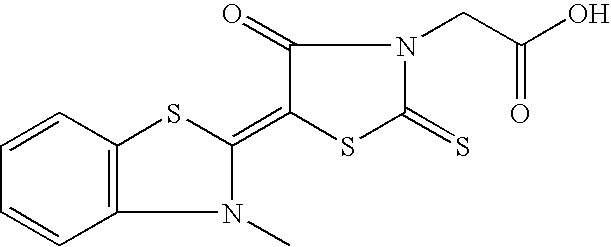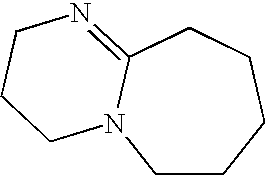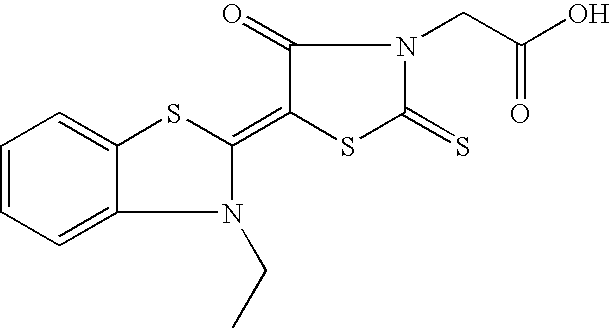Metal chalcogenide composite nano-particles and layers therewith
a technology of metal chalcogenide and composite nanoparticles, applied in the field of new materials, can solve the problems of less conductors and undesirable photovoltaic cells
- Summary
- Abstract
- Description
- Claims
- Application Information
AI Technical Summary
Benefits of technology
Problems solved by technology
Method used
Image
Examples
Embodiment Construction
Preparation of a ZnS Nano-Particle Dispersion
[0100] The following solutions were prepared:
5 Solution 1: ZnCl.sub.2.2H.sub.2O 81.76 g (0.47 moles) deionized water made up to 600 mL Solution 2: Na.sub.2S.9H.sub.2O 140.22 g (0.57 moles) NH.sub.3 (50%) 4.5 mL deionized water made up to 600 mL
[0101] Dispersion 1:
[0102] The ZnS dispersion 20% substoichiometric in zinc was prepared as follows: first solutions 1 and 2 were added simultaneously at 25.degree. C. at a flow rate of 500 mL / min to 1000 mL of deionized water maintained at 25.degree. C. and stirred at 1500 rpm. To 1000 mL of the resulting dispersion, 1000 mL of a 5% thioglycerol solution in water were added and the dispersion concentrated to 1000 mL by means of a Fresenius F60 cartridge. This dispersion was subsequently diafiltered by using 5000 mL of a 5% solution of thioglycerol in water. This dispersion was then further diafiltered using 2000 mL of deionized water. The dispersion was further concentrated to a volume of about 570...
PUM
| Property | Measurement | Unit |
|---|---|---|
| thicknesses | aaaaa | aaaaa |
| thicknesses | aaaaa | aaaaa |
| thickness | aaaaa | aaaaa |
Abstract
Description
Claims
Application Information
 Login to View More
Login to View More - R&D
- Intellectual Property
- Life Sciences
- Materials
- Tech Scout
- Unparalleled Data Quality
- Higher Quality Content
- 60% Fewer Hallucinations
Browse by: Latest US Patents, China's latest patents, Technical Efficacy Thesaurus, Application Domain, Technology Topic, Popular Technical Reports.
© 2025 PatSnap. All rights reserved.Legal|Privacy policy|Modern Slavery Act Transparency Statement|Sitemap|About US| Contact US: help@patsnap.com



